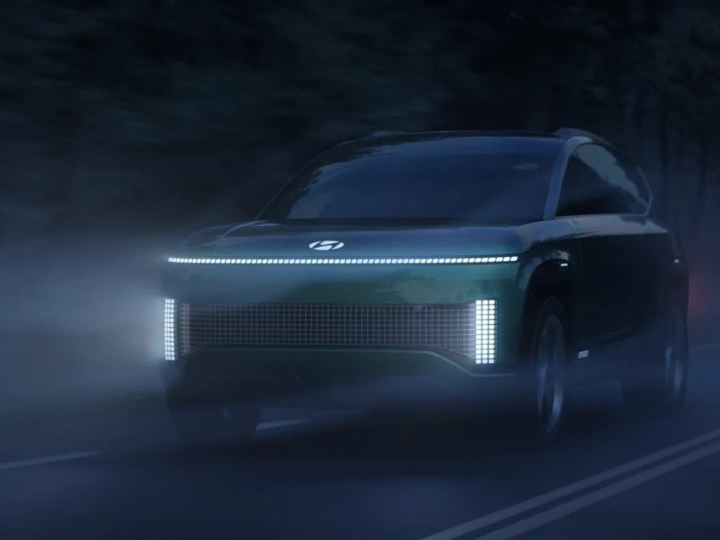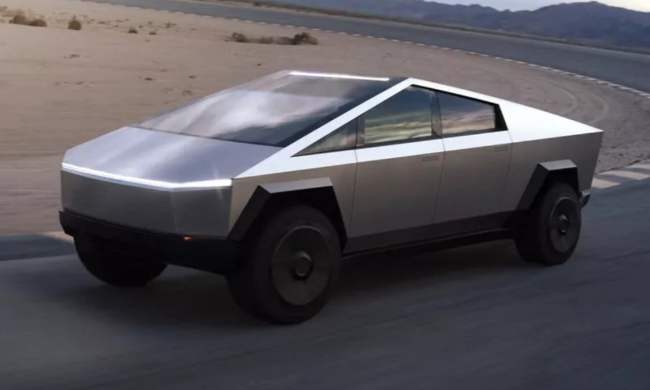
Hyundai has been at the forefront of EV development for a while now, largely thanks to the success of the crossover-sized Hyundai Ioniq 5. But the company is readying another new EV that could be even more popular than the Ioniq 5 — or at least more desirable in the U.S., the land of big cars.
The upcoming Ioniq 9, previously set to be called the Ioniq 7, will be Hyundai’s take on an electric SUV. It will be to Hyundai what the Kia EV9 is to Kia. It will have three rows and carry over design elements from the Ioniq 5.
Curious about the Ioniq 9 and whether it could be your next car? Here’s everything we know about the Hyundai Ioniq 9 so far.
Hyundai Ioniq 9 design
So far, we’ve only seen a concept version of the Hyundai Ioniq 9, which was previously shown off under the concept name “Seven.” At the time, the car was set to be called the Ioniq 7, however, Hyundai seemingly wants to capitalize on the success of the Kia EV9 — and as a result has changed the name of the upcoming SUV.

Because we’ve only seen a concept version of the SUV, there’s still a lot we don’t know about the Ioniq 9. If the car is similar to the concept, however, it will offer pixel lights that stretch across the front of the car, similar to the Ioniq 5. On the back, there will be more pixel lights stretching across the rear.
The car’s shape is also a little different. The Ioniq 9 has a swooping roofline and curved side panels, culminating abruptly in a flat rear. It’s a unique take on the SUV shape, but we’ll have to see how much of the concept shape ends up in the final version.
Details on the interior of the Ioniq 9 are even more scarce. The concept version embraced the “living room on wheels” look, with chairs that could rotate and face each other and a minimalistic overall look. It’s unlikely much of this concept will end up in the final iteration of the car. Instead, we’re expecting something a little closer to the Ioniq 5, with a dual display at the front and more traditional seating. We do know that the SUV will have three rows, though.
Hyundai Ioniq 9 price
Hyundai hasn’t announced any official details about the pricing of the Hyundai Ioniq 9, but we can speculate. The SUV is likely to be in a similar price range to the Kia EV9, which starts at $54,900 and ranges up to the mid-$70,000s. It’s very likely the Ioniq 9 will be offered at around the same price.

The lowest-cost model is expected to be a single-motor rear-wheel drive version with the smaller of the offered batteries. An upgrade to multi-motor models and larger batteries should cost a little extra.
Hyundai Ioniq 9 release date
So when will we see the Ioniq 9 in person? Well, it’s unclear. A report from Automotive News notes that the car will enter production in Korea in the first half of 2024 and in the U.S. in mid-2025. That doesn’t necessarily mean that it won’t be available in the U.S. until 2025 — Hyundai could import the car before then. A report from Korean Car Blog notes that the final version of the Ioniq 9 will be unveiled in early 2024, so if that’s accurate, we’ll see more about the car very soon.
Hyundai Ioniq 9 models
Hyundai has yet to announce specific models of the Ioniq 9; however, we do know that it will be built on the same E-GMP platform as the Ioniq 5 and Kia EV9, and we can speculate on the models we’ll see.
The Ioniq 9 is likely to come in similar models as the EV9, which means that there could be a single-motor rear-wheel drive variant, a rear-wheel drive model with a large battery, and a range of all-wheel drive models with varying battery sizes.
Hyundai Ioniq 9 charging speed and range
One of the best things about Kia and Hyundai’s EVs has long been the charging speed. The cars have so far offered a charging speed of 350 kilowatts, which means that they can fully charge in under 20 minutes at the right charging station. It’s expected that the Ioniq 9 will continue this trend.

Range is a little less certain. When Hyundai unveiled the concept version of the car, it said that it would offer a range of over 300 miles. Unfortunately, it’s much more likely that only certain models will have a range of more than 300 miles, with the lower-end models instead having a lower range. The EV9 has a top range of 304 miles, and we hope the Ioniq 9 can beat it.
Hyundai Ioniq 9 performance
Performance is another area we know little about regarding the Ioniq 9. However, again, we expect it to offer similar performance to the Kia EV9, which is a good sign.
The Kia EV9 base model is a rear-wheel drive, single-motor model, and it offers an acceleration of 0 to 60 miles per hour in 7.7 seconds. At the top end, however, the EV9 can accelerate from 0 to 60 miles per hour in 5.0 seconds with a dual-motor setup that delivers 379 horsepower and 516 lb.-ft. of torque.
We’re expecting similar performance from the Ioniq 9. These aren’t necessarily built to be speed demons — instead, they’re aimed at families, and while a little extra oomph can certainly come in handy in many situations, they don’t need to break records.
Hyundai Ioniq 9 tech features
While Hyundai hasn’t necessarily confirmed the kinds of tech features that the Ioniq 9 will offer, we expect the tech to be very similar or identical to that of the Ioniq 5. That’s not a negative thing by any means — the infotainment system on the Ioniq 5 isn’t all that bad. While it certainly doesn’t compare with software-forward companies like Rivian and Tesla, it is mostly easy to navigate. And it supports CarPlay and Android Auto, which we expect from the Ioniq 9.
Additional tech features we expect to see include the camera-based blind spot monitoring feature, along with self-parking features.
The car will likely offer a range of driver-assist features, too. Like most other new cars these days, the Ioniq 9 will likely offer lane-centering and adaptive cruise control tech, which will allow the car to feel almost like it’s self-driving in highway situations. Hopefully, however, Hyundai will step it up a little to reach Level 3 self-driving tech, which would allow you to take your hands off the wheel on the highway and actually let the car take over.
Hyundai Ioniq 9 tax credit status
It’s currently unclear if the Ioniq 9 will qualify for the federal tax credit; some reports indicate that Hyundai is planning on eventually building the car at its Georgia plant, though the first batch may be imported from South Korea, with Georgia-built models taking over in the second year. We’ll have to wait and see if the Ioniq 9 qualifies for the tax credit.
Our Hyundai Ioniq 9 wish list
In 2024, every EV should have a range of at least 300 miles, and we’re hoping that even the base version of the Ioniq 9 has such a range. That’s unlikely, though, especially considering that the base model of the Kia EV9 sits at 230 miles. On top of a decent range, we would like to see the Ioniq 9 at least offer some of the interior design features of the concept version of the car.



